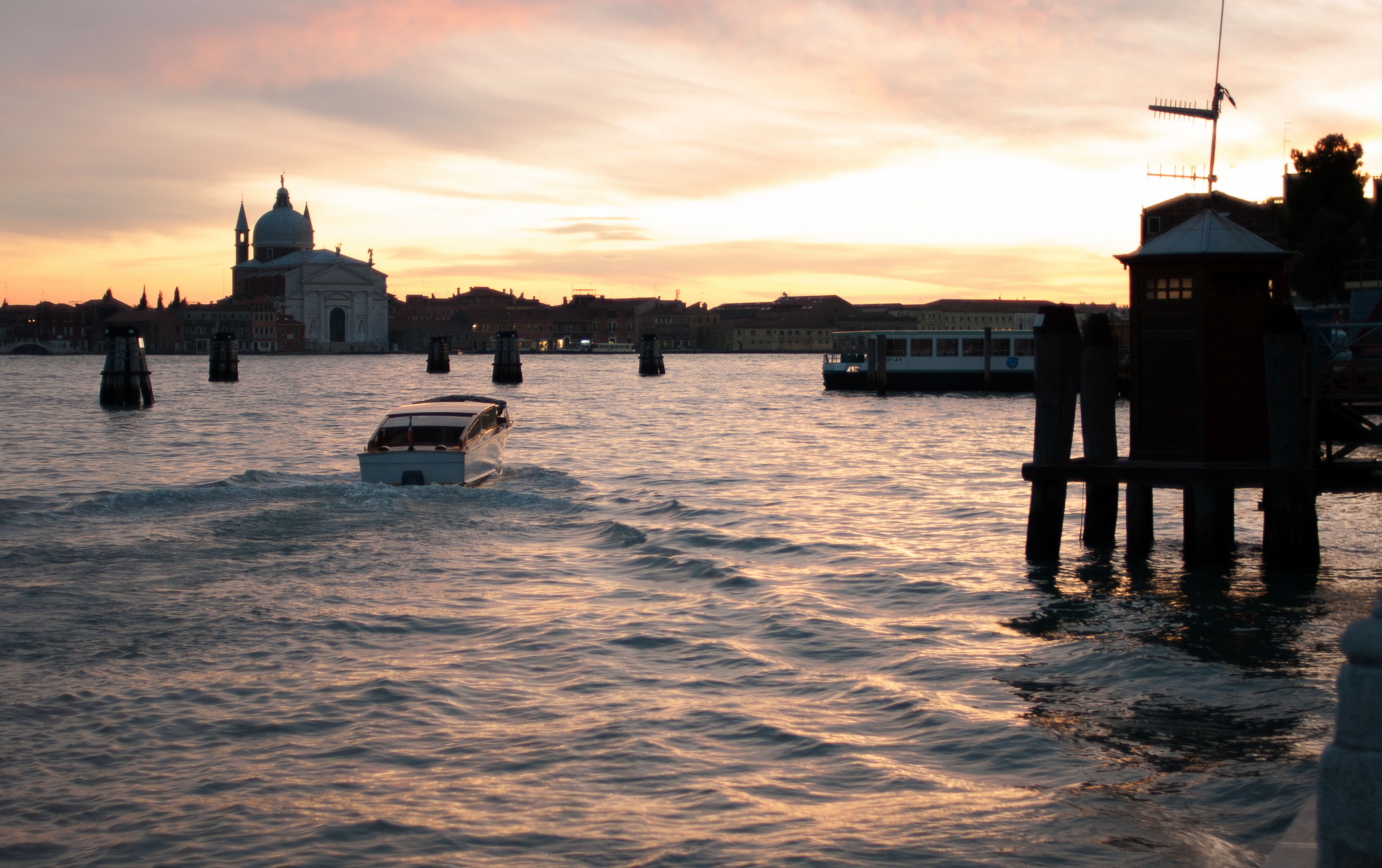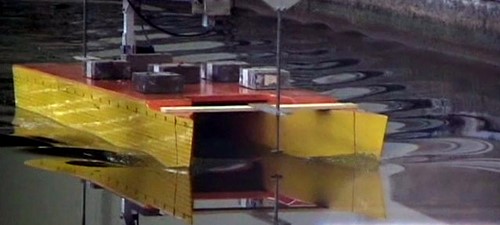wave pollution: Venice
The waterways traffic growth perspective brings with it problems that need to be tackled with commitment and urgency. Among them is particularly important the wave pollution problem.
One of the most important examples is Venice, with a very high number of motorboats daily transiting.

This kind of pollution, with its continuous and widespread activity, is responsible for processes of morphological alteration of the building structures and of the lagoon ecosystem.
Venice has to be protected as well as many other natural and architectural locations across the continent affected by traffic.
HULL AND WAVE RESISTANCE
The motion resistance of a boat is basically determined by two main phenomena.
The first originates by friction of water against the hull surface, and is said frictional resistance. You can reduce this component acting on the level of finishing of the submerged surfaces.
The second is due the unavoidable shift of water produced by the boat during its navigation and causes the wave resistance. In other words, the wave resistance is due to the energy that the ship has to spend for the creation of a wave field due to the relative motion between the water and the hull.
The waves produced transfers their energy on structures built near the banks and on the banks themselves. To preserve the coasts and the buildings by this particular kind of pollution, expensive containment infrastructures are required.
A way to reduce this wave resistance consists in optimizing the submerged geometrical shape. This calls for a lot of effort in terms of investments but it can guarantee the craft producing less waves while sailing for a greater sustainability for the environment benefit and consumption.
THE ECONBOARD SOLUTION
Econboard has carried out extensive studies on their hulls, by means of tank tests and employment of numerical simulation softwares.
The tests were performed at the towing tank of Trieste, an internationally approved structure for the deep knowledge of the problems related to navigation in inland waterways.

The dual approach allowed us to compare the simulation results with those obtained from the experimental tests.
The long work assisted the design of a catamaran hull (patented), able to consistently reduce the resistance compared to conventional catamaran hulls and to reduce the wave generation.
AURORA and DIANAE and are the result of this effort.
ECONBOARD RESEARCH
TOWING TANK TESTS
Econboard led a campaign of tank tests following the results of initial numerical analysis, once assigned the specifications of the craft with regard to displacement, dimensions, cruising speed.
The tests were conducted by internationally recognized experts in relation to the problems of navigation in inland waters.
The excellent results obtained have pushed the team to plan further refinements of the new geometries of Econboard hulls. These works are currently following advanced optimization phases.



